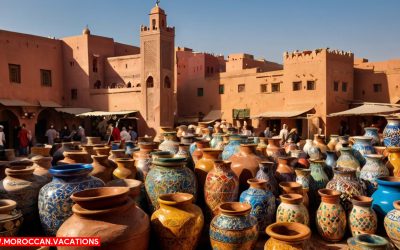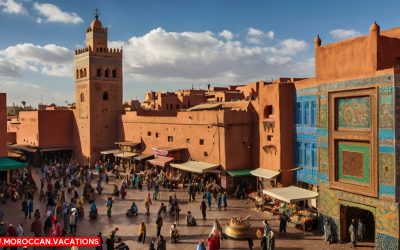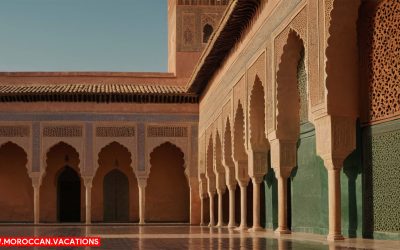The Charm of Moroccan Henna
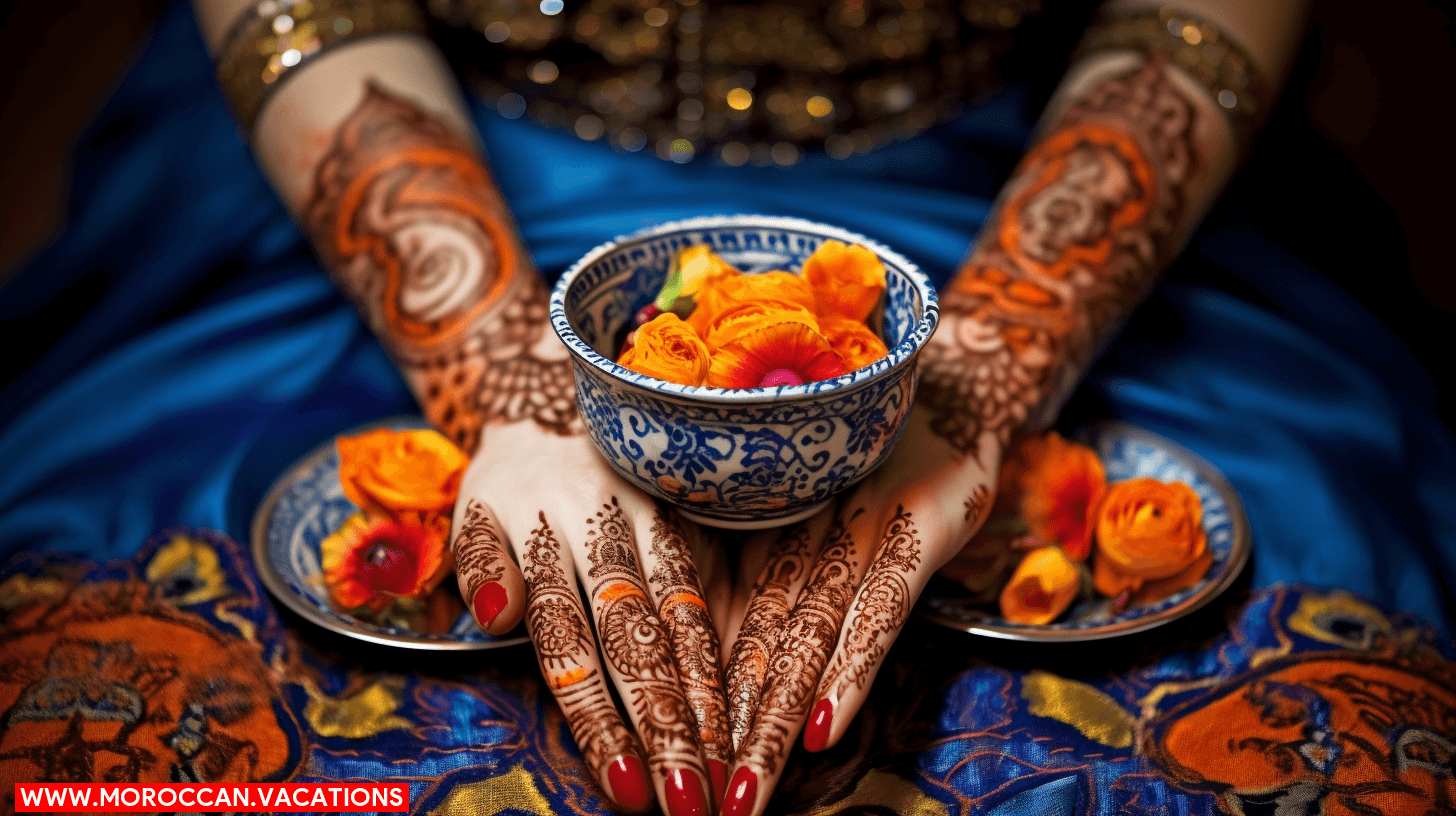

You’re about to embark on a vibrant journey, dipping your fingers into the rich pot of traditional Moroccan henna designs. As intricate as a spider’s web, these designs aren’t just aesthetically pleasing – they’re steeped in history and symbolism. You’ll learn their meanings, marvel at the techniques used, and even compare Moroccan henna to other styles. Ready to unravel this artistic mystery? Let’s dive in and preserve this beautiful heritage together.
Experiencing the charm of Moroccan henna isn’t just about admiring its intricate designs, it’s about diving into a rich cultural tradition that’s as captivating as it is beautiful. You’re not just getting a temporary tattoo on your skin, you’re participating in a centuries-old ritual that embodies a culture’s identity, beliefs, and artistic expression.
But Moroccan henna isn’t simply a visual feast. Underneath those stunning patterns lies a world of henna health benefits that you might not be aware of. Henna isn’t just a natural dye, it’s got antibacterial and antiviral properties, too. It’s known to offer relief from headaches and improve nail health. Not to mention, it cools the body, making it a perfect choice for hot Moroccan summers.
Now, let’s talk about henna tattoo maintenance. The secret to a long-lasting design lies in the proper care of your henna. Avoid water for the first 24 hours, keep the area moisturized, and don’t scrub or exfoliate the skin. With these precautions, you’re not just preserving a beautiful design, but also a treasured piece of Moroccan culture.
Moroccan Henna: A Historical Overview
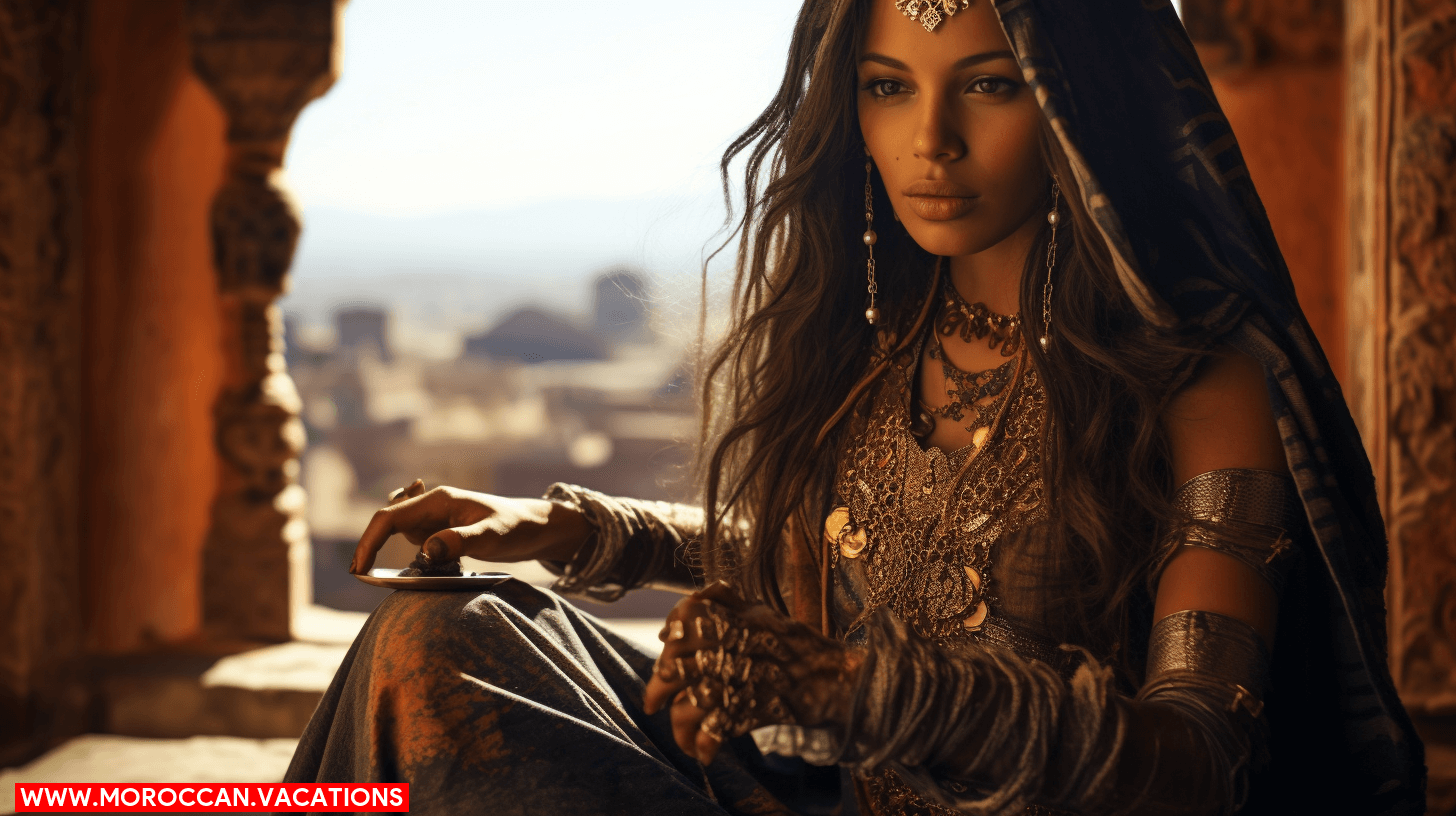

To fully appreciate the allure of Moroccan henna, you’ve got to delve into its thousand-year history. Originating in the North African region, henna has been a significant part of Moroccan culture since time immemorial. Its use wasn’t merely cosmetic. Henna’s medicinal use was prevalent, with locals often applying it to alleviate ailments such as headaches and skin conditions – a testament to the plant’s versatility.
As Moroccan traders journeyed across continents, the art of henna traveled with them, marking the start of Moroccan henna’s global influence. A symbol of celebration, fertility, and good fortune, the designs soon found favor in weddings, births, and other significant events, intertwining with the cultural fabric of societies far and wide.
However, henna was more than a cultural commodity. It represented freedom and individualism, a canvas to express personal narratives. The intricate patterns and motifs were more than aesthetic choices; they were stories etched onto the skin, a testament to the person’s journey. Thus, Moroccan henna designs became a unique, free-form language, a voice that resonates through time and across borders.
Symbolic Interpretations in Henna Art
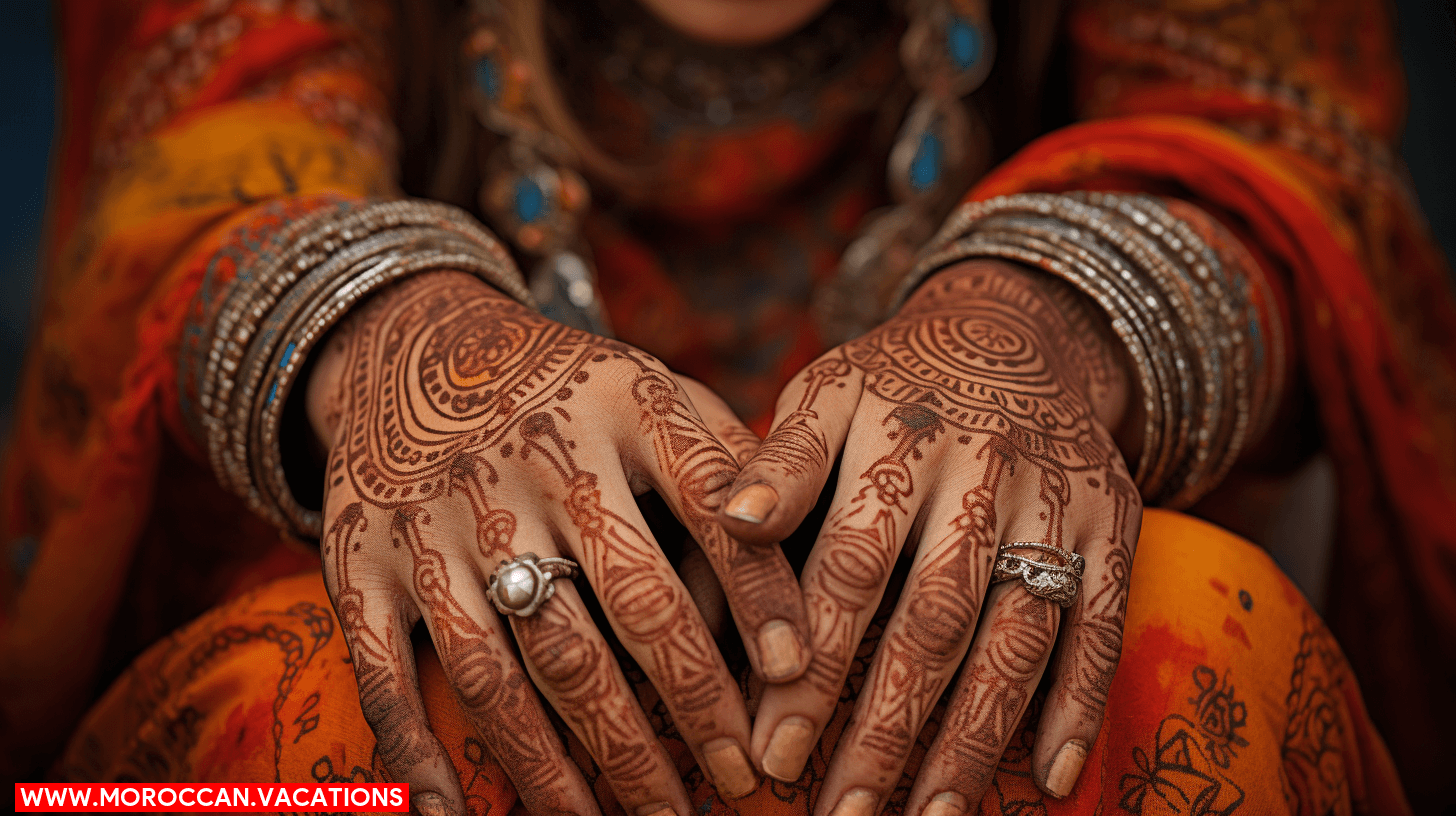

In your exploration of Moroccan henna’s rich tapestry, you’ll find that each design holds its own unique symbolism, painting tales of history, religion, and personal identity. The artistry is not merely aesthetic; it’s steeped in cultural significance and meanings.
To immerse yourself deeper, let’s delve into:
- Henna Color Meanings: Traditionally, red henna symbolizes joy and luck, while black henna, although not native to Morocco, often represents strength and protection.
- Symbolic Patterns: Different motifs have different meanings – a fish symbolizes fertility, a peacock denotes beauty, and geometric patterns represent the infinite.
- Cultural Appropriation Concerns: In the globalized world, it’s essential to respect and understand the cultural significance of Moroccan henna instead of merely using it as a fashion statement.
- Personal Narratives: Henna designs often tell personal stories, expressing individual experiences and aspirations.
While enjoying the beauty of Moroccan henna designs, remember to consider their cultural context and symbolism. It’s not just about the freedom to express yourself artistically, but also about honoring the rich cultural heritage that these designs encapsulate.
Key Elements of Moroccan Henna Designs
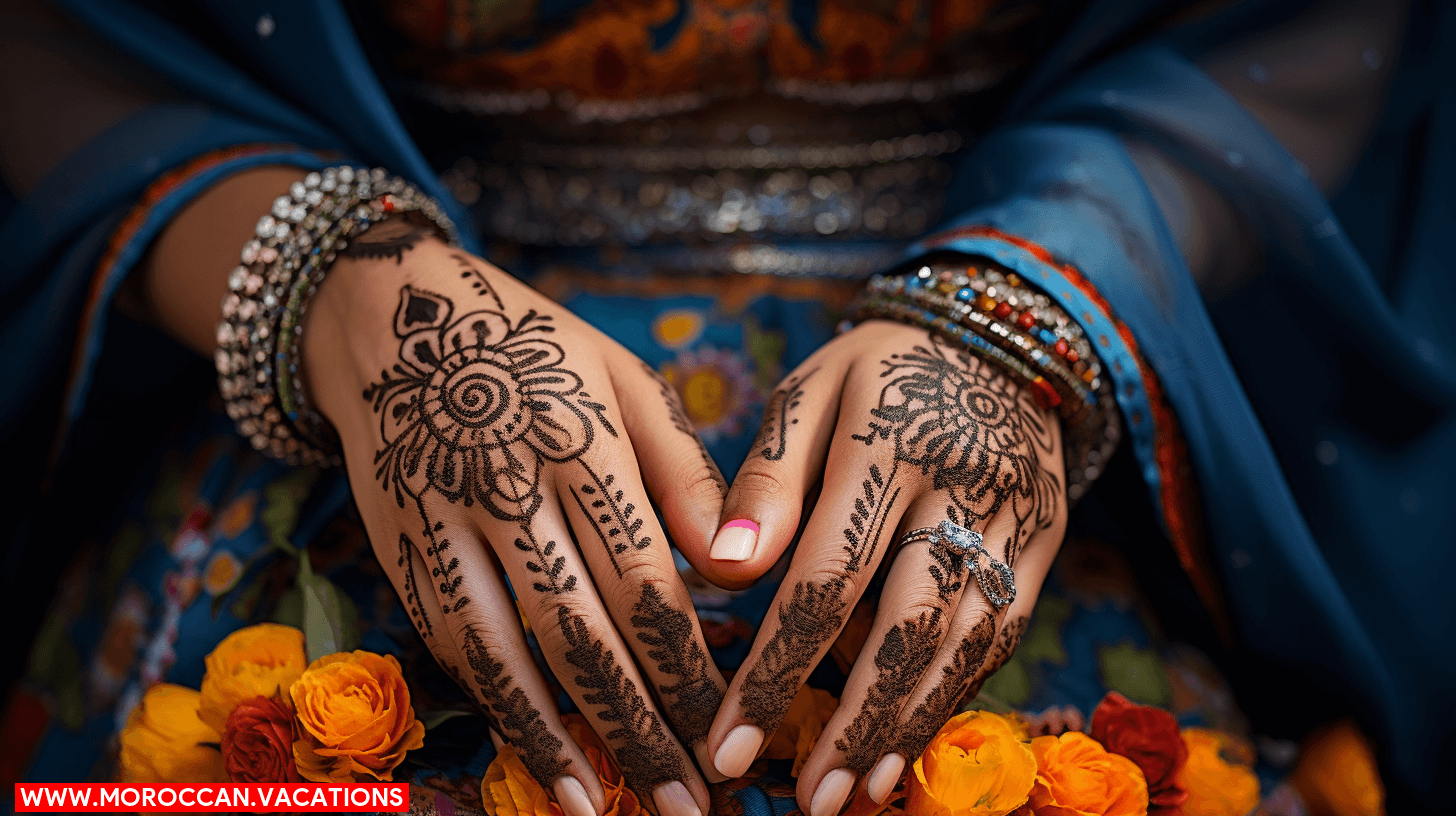

Now that you’ve got a grasp on the symbolic interpretations, let’s delve into several key elements that truly define the intricate beauty of Moroccan henna designs.
| Element | Description |
| Patterns | Moroccan henna designs often incorporate geometric shapes. These patterns symbolize protection and are believed to ward off evil. |
| Fertility Symbols | In Moroccan literature, henna is associated with fertility. Hence, motifs like flowers, fruits, and birds are common. |
| Henna’s Therapeutic Benefits | Besides being aesthetically pleasing, henna provides cooling effects. It’s often used to soothe headaches or fevers. |
| Storytelling | Each design tells a story or conveys a message. This can range from celebrating a marriage to wishing for a good harvest season. |
| Hand Placement | The placement of the henna, whether on the hands, feet, or elsewhere, also carries meaning. It’s more than just a pretty design – it’s a language of its own. |
Techniques and Tools for Henna Application
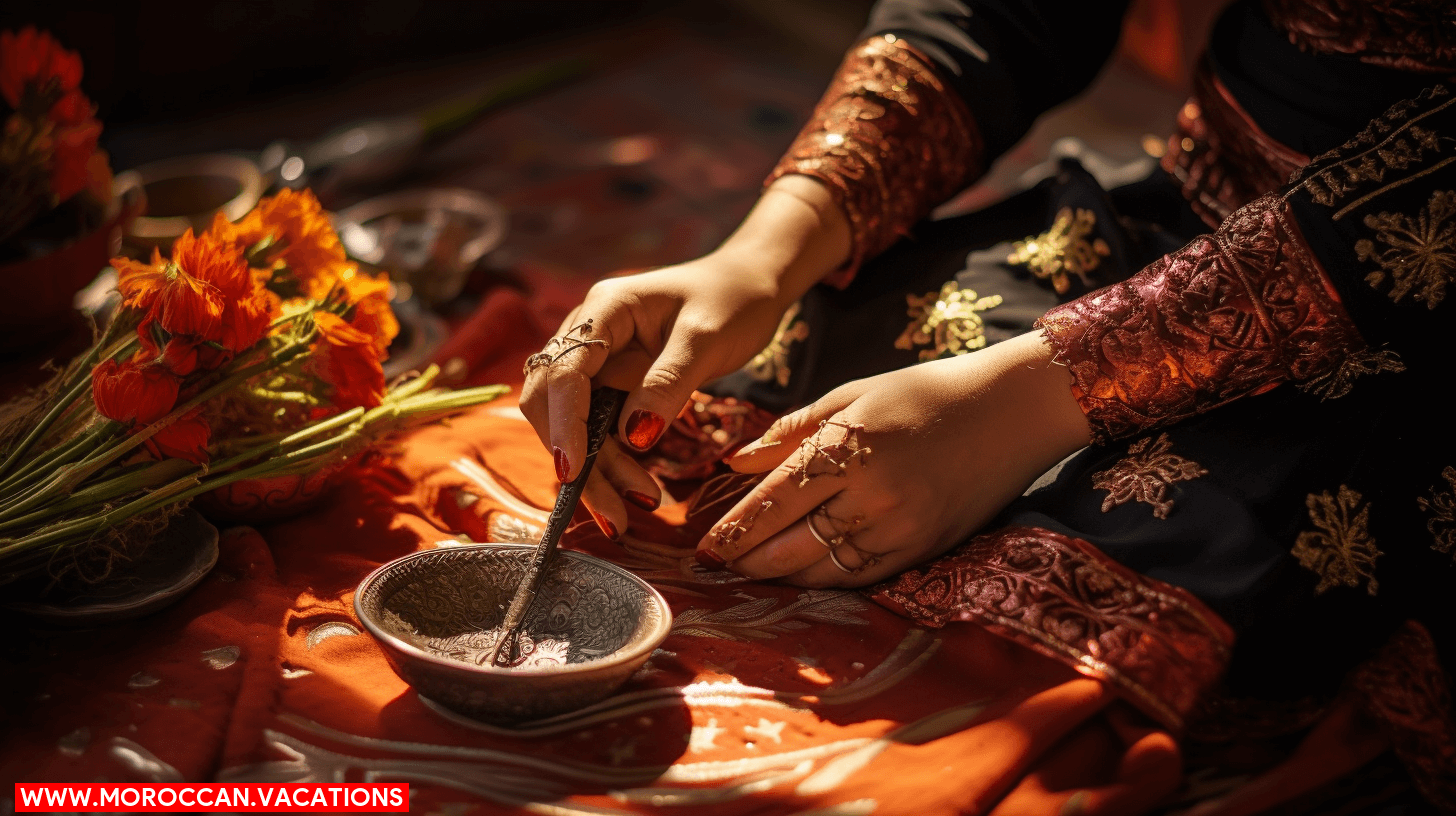

After exploring the significance of different elements in Moroccan henna designs, let’s delve into the various techniques and tools you’ll need to create these stunning works of art. The process involves quite a bit of detail, precision, and a certain artistic flair. But, with the right Henna Mixing Techniques and Traditional Application Tools, you’re set to produce captivating motifs.
Here’s a rundown of what you’ll need:
- Henna Powder: The first step is acquiring high-quality henna powder. It’s the base of your henna mix, and its quality will determine the vibrancy of your design.
- Henna Mixing Techniques: For a smooth application, you need a well-mixed paste. Start with henna powder and a mildly acidic liquid like lemon juice. Slowly add the liquid until you achieve a consistency similar to toothpaste.
- Cones or Jacquard Bottles: These are the traditional application tools. Cones offer more precision, while bottles are easier to squeeze.
- Patience and Practice: Lastly, remember that mastering henna application takes time. Practice making basic shapes first, then gradually move to intricate designs.
Embrace the freedom that comes with creating Moroccan henna designs. It’s a journey of self-expression and cultural exploration.
Moroccan Henna in Weddings and Festivals
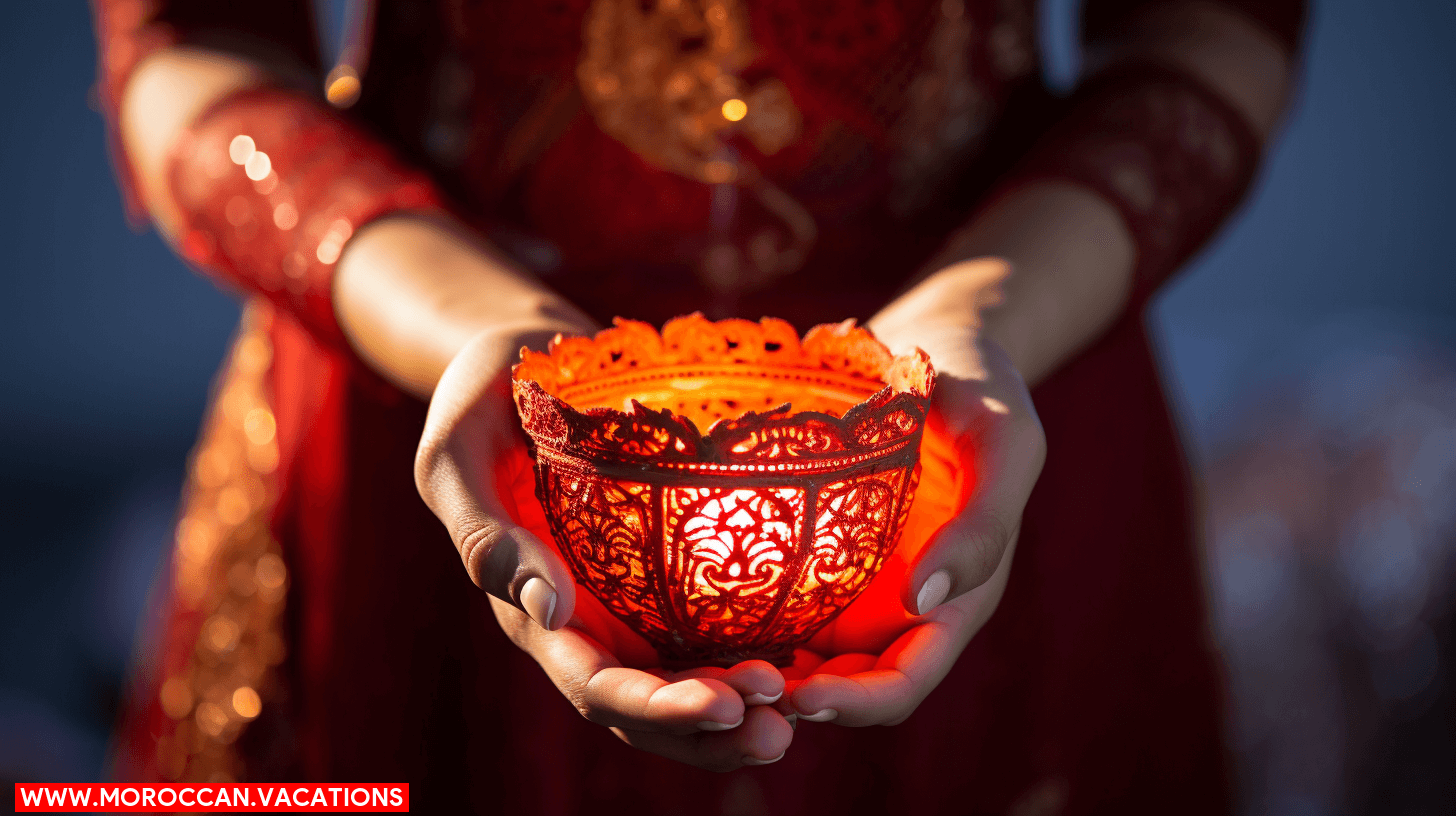

As you delve deeper into Morocco’s vibrant culture, you’ll discover the bride’s henna night is a cherished highlight in both weddings and festivals. This traditional ritual, known for its intricate henna designs, symbolizes good luck and prosperity for the couple.
The Henna Preparation Rituals are quite elaborate. They start with the mixing of henna powder with water, lemon juice or tea to create a paste. This paste is then carefully applied on the bride’s hands and feet in detailed patterns, symbolizing protection and fertility.
Understanding the Bridal Henna Significance goes beyond the mere aesthetics. Each design is deeply symbolic, reflecting the couple’s hopes and dreams for their future together. The darker the henna stain, the stronger the marriage will be, or so it’s believed.
Let’s look at this through a detailed table:
| Aspect | Significance |
| Henna Preparation | Symbolizes protection, fertility |
| Henna Design | Reflects couple’s hopes, dreams |
| Henna Stain | Indicates strength of marriage |
| Henna Ritual | Brings good luck, prosperity |
In the heart of Moroccan culture, you’ll find freedom and beauty intertwined in the form of henna. Its presence in weddings and festivals is a testament to its enduring significance.
The Process: Creating Moroccan Henna Designs
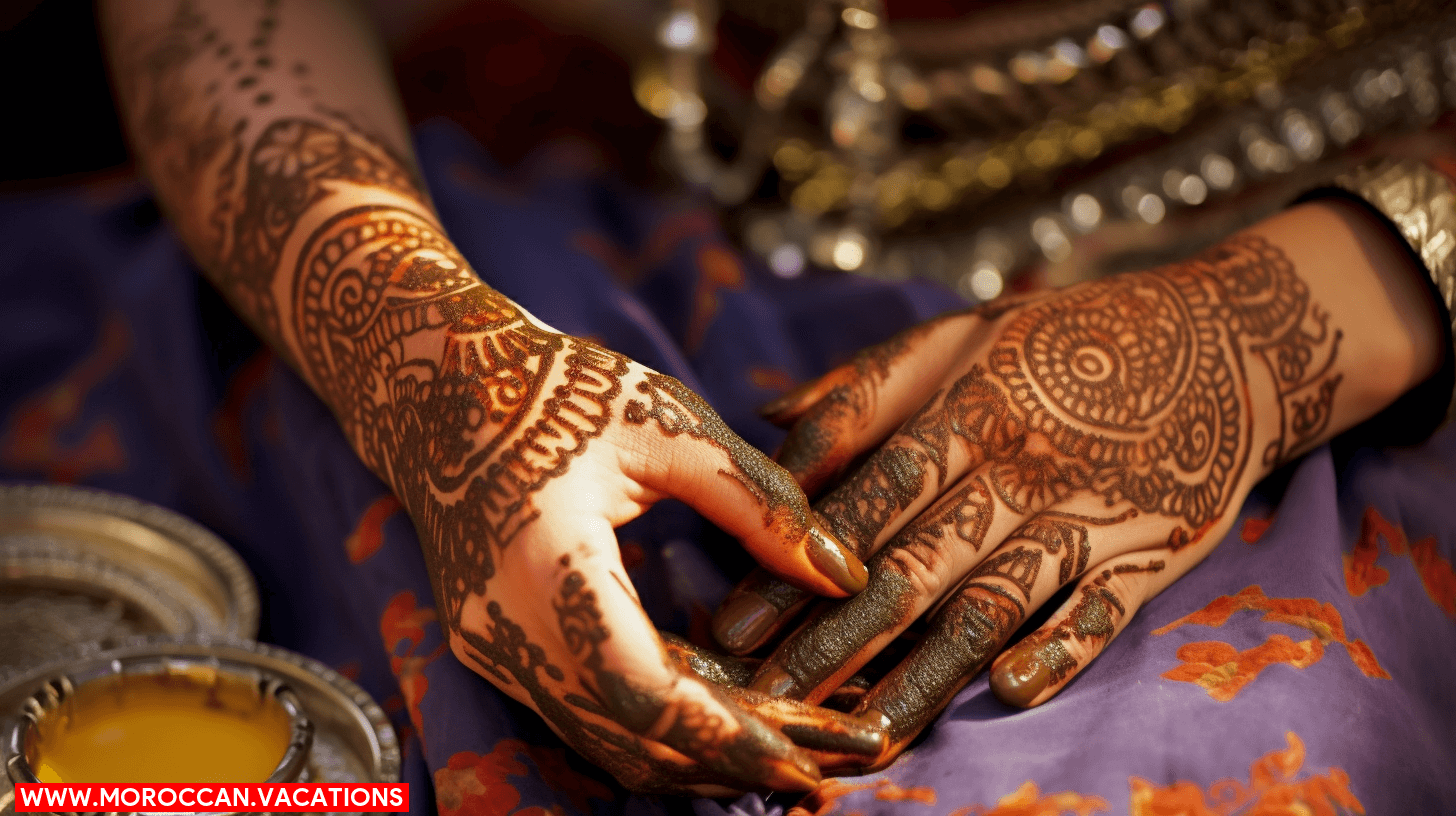

Diving into the artistry of creating traditional Moroccan henna designs, you’ll quickly realize it’s a process requiring patience and precision. Understanding the cultural influence on design is essential, and sourcing your henna ingredients from reliable sources guarantees quality and authenticity.
To create these designs, you’d typically follow these steps:
- Prepare Henna Paste: You’d source your henna ingredients, often Lawsonia Inermis leaves, from reputable sources. These are ground into a fine powder and mixed with water to create a paste.
- Design Planning: The cultural influence on design is significant. You’d typically use symbols and motifs that have cultural or personal meaning. The design’s complexity can vary from simple geometric patterns to intricate floral motifs.
- Application: Using a cone or syringe, you’d carefully apply the paste onto the skin, following your design plan. Precision is key here.
- Drying and Removal: The paste is left to dry for a few hours or overnight. After drying, it’s gently scraped off, leaving behind a stunning design.
Learning From Moroccan Henna Masters
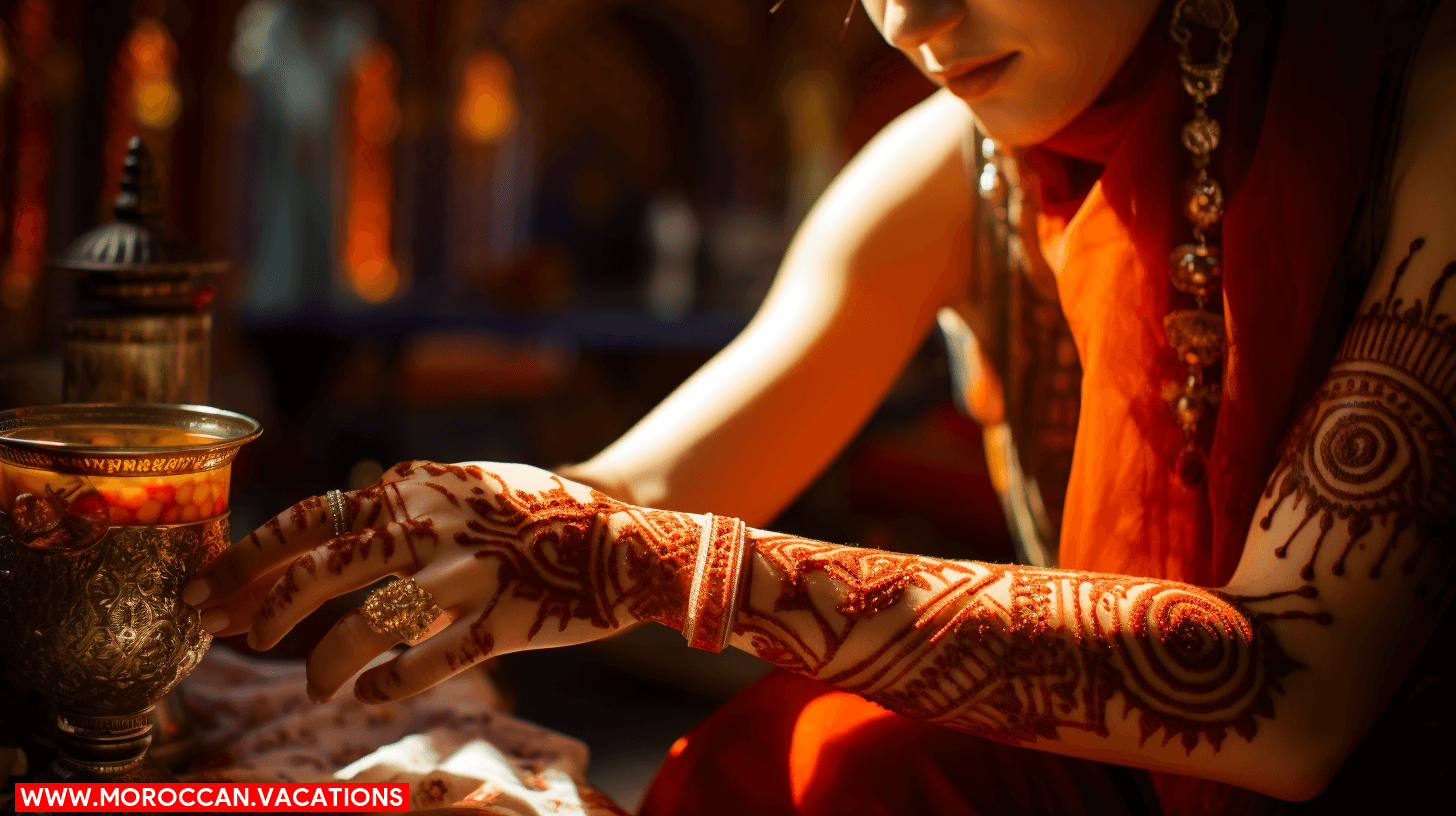

To truly master the art of traditional Moroccan henna designs, you’ll need to learn from the masters themselves, absorbing their years of experience and expertise. Consider seeking out henna training schools where skilled practitioners pass down their knowledge.
Moroccan henna symbolism is rich and complex. Each design carries a specific meaning, reflecting the culture’s historical contexts, beliefs, and aspirations. These symbols aren’t just decorative, they’re deeply engrained in Moroccan identity.
As you study, you’ll start to unravel the intricate beauty of these designs. You’ll learn how to create each line, curve, and dot to form patterns that tell stories.
Here’s a quick overview of what you might learn from Moroccan henna masters:
| Techniques | Moroccan Henna Symbolism |
| Line work | Protection against evil spirits |
| Dot work | Fertility and good luck |
| Curve work | Flow of energy and life |
Moroccan Henna Vs. Other Henna Styles
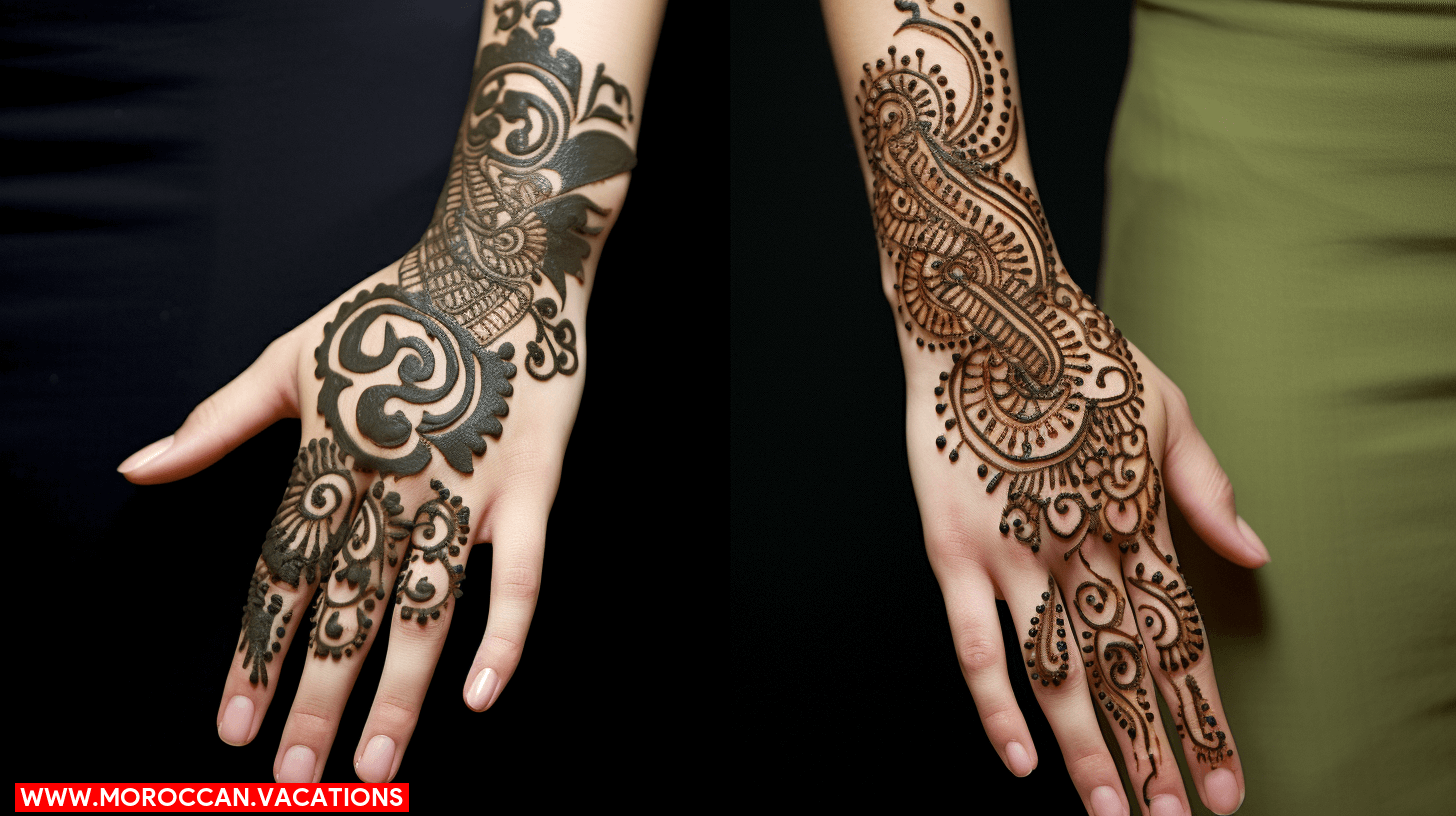

Now, let’s compare Moroccan henna with other styles; you’ll notice a myriad of differences in their design and symbolism. Moroccan henna designs are typically more geometric and abstract, often lacking the representational forms seen in other styles like Indian or Arabic henna.
Here are four key differences:
- Design: Moroccan henna is predominantly geometric and abstract, whereas other styles often have floral and figurative patterns.
- Symbolism: Each Moroccan design carries a symbolic meaning for protection or blessings, while other styles may not carry such strong symbolism.
3.Henna Tattoo Aftercare: Moroccan henna generally requires less aftercare, thanks to its natural, high-quality ingredients, while other styles may need more rigorous aftercare to maintain their vibrancy.
- Henna Health Benefits: All henna styles offer health benefits like skin conditioning and soothing effects. However, Moroccan henna, due to its traditional and organic composition, might provide more skin nourishment.
Preserving the Art: Moroccan Henna Today
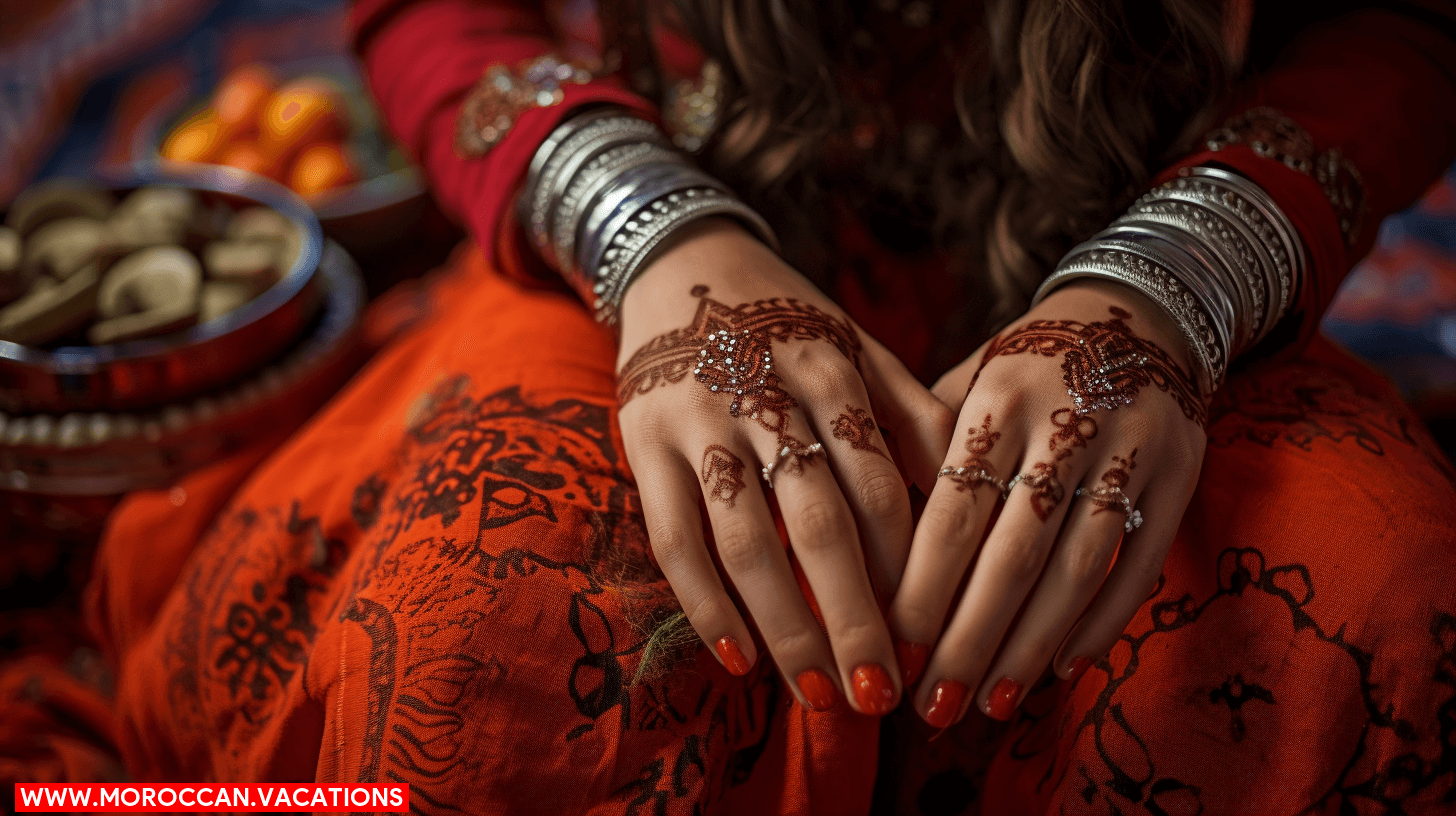

While you may appreciate the unique beauty and symbolism of Moroccan henna, it’s equally important to understand the efforts being made to preserve this traditional art form in today’s modern world. Henna Conservation Efforts are in full swing, driven by a passion to retain the cultural identity that is intricately woven into the patterns of this ancient art form.
It’s not just about maintaining the old, however. Innovative minds are working on Contemporary Henna Adaptations, integrating traditional Moroccan designs with modern aesthetics. This fusion of the past and present creates a dynamic art form that resonates with both older and younger generations. It’s a clever approach that not only ensures the survival of Moroccan henna but also promotes its growth in a rapidly changing world.
Moreover, artists and enthusiasts are turning to digital platforms to share their knowledge, techniques, and designs, further spreading the reach of Moroccan henna. They’re fostering a community that transcends geographical boundaries, giving everyone the freedom to explore, learn, and contribute to this thriving art form.
Preserving Moroccan henna isn’t merely about safeguarding a tradition; it’s a testament to the resilience of a rich culture that refuses to fade into obscurity, constantly reinventing itself to stay vibrant and relevant in the contemporary world.
Introducing Ayoub Karbachi, a brilliant wordsmith and curator of the Moroccan Vacations website. Prepare to immerse yourself in mesmerizing narratives and extraordinary moments, as he unveils the allure of Morocco's captivating destinations like never before.
Related Articles
Marrakesh's Art Workshops: A Hands-On Experience of Creativity
Exploring Marrakesh's Artistic Heritage Are you ready to unleash your creative potential? Look no further than Marrakesh's art workshops, where you can immerse yourself in a vibrant culture and learn new techniques and mediums. These hands-on experiences will allow...
Exploring Marrakesh's Street Art: A Vibrant Urban Canvas
The Rise of Street Art in Marrakesh If you're craving an escape from the mundane, look no further than the vibrant streets of Marrakesh. Brace yourself for a visual feast as you embark on a journey to explore the hidden world of street art. From traditional motifs to...
The Symbolism in Marrakesh's Architectural Details
Uncover the rich symbolism woven into Marrakesh’s architectural details. From intricate tilework to ornate carvings, explore the cultural significance behind the city’s stunning landmarks. Embark on a journey of discovery through Marrakesh’s hidden meanings and timeless beauty.

